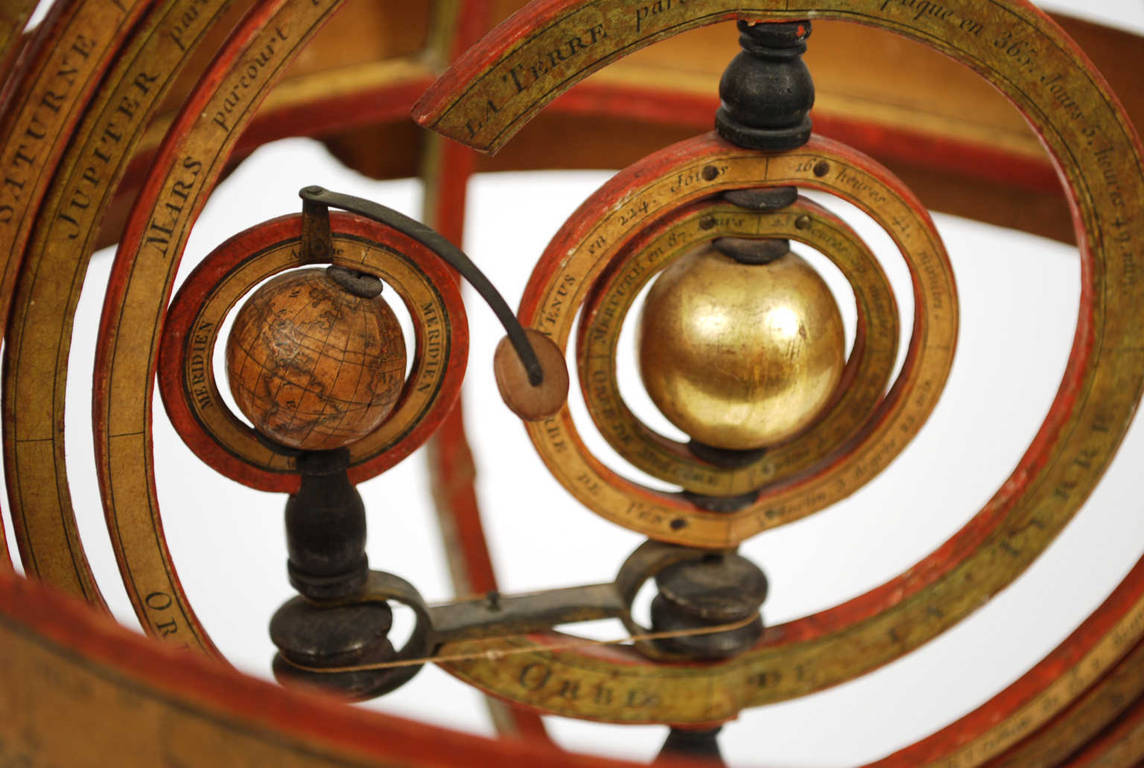antik.it/Antique-globes-world-maps/708-Terrestrial-Globe/
Code 708
EUR 1800.00
In stock
1749571458Code 708 Terrestrial GlobeTable globe made by the geographer and cartographer of the Austro-Hungarian Empire Jan Felkl in the second half of the 19th century.
In addition to the territorial map, the ocean currents are reported.
Turned and ebonized wooden base, papier-mâché and plaster sphere covered with spindles and caps for lithographic printing.
Very good state of readability and conservation.
Dimensions diameter sphere cm 20 – 7.9 inches, height cm 45 – 17.8 inches.
Until the early twentieth century, the spheres for globes were produced as they were originally: two papier-mâché hemispheres pressed and modelled on or inside a hemispherical mould, dried and strengthened on the inside with a wooden board, then glued and covered with a thin layer of plaster. On this support were glued the globe's spindles of the areas between two meridians, generally twelve in paper previously printed by engraving on a copper plate and coloured, each of which covered 30 degrees of longitude.
Man has always wanted to know the world in which he lives and has used all the means available to measure the space around him to further expand his knowledge. The conditions that allowed man to develop models of the world and space probably came about only after thought had reached a level of development that made it possible to understand that natural processes could be represented through a model. Already in ancient Greece, naturalists had come to understand the sphericity of the Earth and its position suspended in space.
The first globe of which there is evidence is the one attributed by Strabo, historian and geographer, to the Greek Crates of Mallo (c.a. 150 BC).
The first globes at the beginning of the 16th century were built under the pressure of the great geographical explorations and immediately began to be used for educational purposes in princely courts, monasteries and colleges; the globe later began to conquer university environments and high and lower schools.
It will be with the nineteenth century of great trade, circulation and the introduction of compulsory education that the desire to know distant countries will increase, making the old method of constructing globes inadequate. Spindles printed from engraved plates are no longer sufficient and the only real resource becomes lithography through which it is possible to print and promptly update maps that with the growth of geographical discoveries made in the various countries become increasingly different.
Jan Felkl (1817-1878) was born in Bohemia and already in 1840 made illustrated prospectuses for globes in 6 different sizes. Over the next twenty years, it grew to become the largest globe manufacturer on the Austro-Hungarian market, producing terrestrial and celestial globes, in 17 different languages, as well as lunar, planetary and tellurian globes.
Felkl presented his globes at the 1867 World Exhibition in Paris and in 1873 in Vienna.
The first globes were produced by engraving and hand-coloring the segments.
Felkl founded his own Geographical and Lithographic Institute in Prague to produce globes and maps.
In 1870 Felkl moved the factory from Prague to Roztok and took his youngest son as a partner in his company renamed Felkl & Son, producing globes for export, throughout Europe and also to the United States. The business grew to employ more than 40 people, also opening a branch in Vienna. The main customers were: schools, public institutions and libraries.
After the death of Jan Felkl the business was continued by the family until the early 1900s.
FAQ
Do you provide an authenticity certificate/expertise?
Of course! The legislative decree n. 42/2004 stipulates that who sells works of art or historical and archaeological items has the obligation to deliver to the purchaser the documents attesting to the authenticity of the object, or at least to submit the documents relating to the probable attribution and origin. Antik Arte & Scienza provides an expertise (as warranty) that contains a description, period and assignment or the author, if known, of the item.
How can I pay?
Secure payments by PayPal, credit card or bank transfer.
What are the shipping terms and the delivery schedule?
Shipping by DHL or UPS is free (but if we are shipping to a country non-EU remember that any taxes and customs duties are on your expense), and items will be sent just after receiving of payment.
Italy: delivering on the average in 24 h.
Europe: delivering on the average in 2/3 weekdays.
Other countries: delivering on the average in 5 weekdays; custom duties charged to the buyer.
Is shipping insured?
Of course! Free insurance by Lloyd's London that covers almost all destinations.
If I change my mind, can I return the item?
Of course! (see our general terms for more information).
e-Shop
Antique globes-world maps
Code 708 Terrestrial Globe
Antik Arte & Scienza sas di Daniela Giorgi - via S. Giovanni sul Muro 10 20121 Milan (MI) Italy - +39 0286461448 - info@antik.it - www.antik.it - Monday-Saturday: 10am-7pm




























